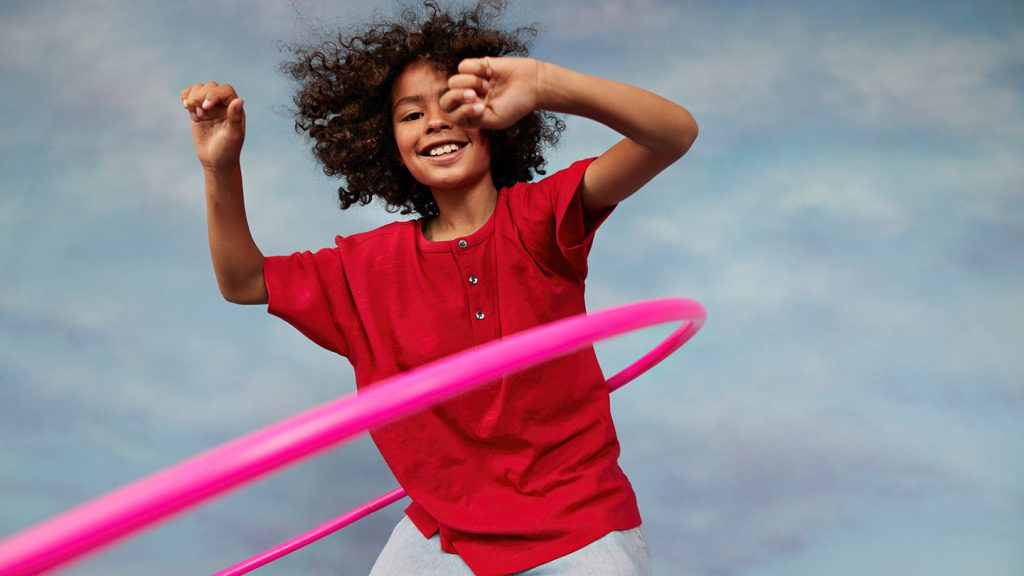Hula-hooping robots reveal the physics behind keeping rings aloft – Science News Magazine

Every print subscription comes with full digital access
Gyrating objects should be hourglass-shaped to hold a hoop steadyExperiments with hula-hooping robots revealed how the hoops stay up, providing some tips for humans aiming to perfect their technique.Klaus Vedfelt/Getty ImagesBy Emily ConoverJanuary 17, 2025 at 9:00 amTo keep a Hula-Hoop aloft, it helps to be in shape — literally.Experiments with gyrating, hoop-slinging robots have revealed how these spinning rings stay up despite the pull of gravity. The shape of the robot’s body is a crucial factor, researchers report in the Jan. 7 Proceedings of the National Academy of Sciences.The shape needs to have “hips” — a slope that provides upward force to counteract gravity. And a “waist” — curvature like an hourglass — keeps the hoop from drifting up or down and sliding off.Inspired by performers near his home in Greenwich Village, applied mathematician Leif Ristroph of New York University began considering the physics of Hula-Hoops. Previous studies, he and colleagues realized, hadn’t explained how the hoop stays aloft. (Ristroph has a track record of tackling quirky physics questions. His group recently investigated what would happen if a lawn sprinkler sucked water in instead of shooting it out.)So Ristroph and colleagues gave it a whirl. In experiments, a gyrating cylindrical robot couldn’t keep a hoop from sliding down. It was missing the essential upward force, generated when a hoop swings over a sloped shape. But a cone-shaped robot, with a slope but no waistlike curve, also failed. If the hoop began toward the top of the cone, the upward force overpowered gravity, and the hoop would migrate up. If the hoop began toward the bottom, the upward force wasn’t enough to keep it aloft, and it migrated down. But an hourglass-shaped robot kept a hoop steadily aloft. People should be able to hula-hoop regardless of body shape, by adapting their gyrations based on position changes of the hoop. Indeed, the researchers were able to get a cone-shaped robot to hula-hoop by adjusting the rate of gyration depending on how high the hoop slid.A correct launch was also essential in the experiments. If the hoop started off too slow, the attempt would fail. In successful sessions, the hoop lined up with the gyrating body, such that the hoop and body always shifted in the same direction. That’s also the best way to launch a hoop, Ristroph says.A final tip gleaned from the research: Bigger hoops are good for beginners — they can be supported with slower gyrations.Questions or comments on this article? E-mail us at feedback@sciencenews.org | Reprints FAQX. Zhu, O. Pomerenk and L. Ristroph. Geometrically modulated contact forces enable hula hoop levitation. Proceedings of the National Academy of Sciences. Vol. 122, January 7, 2025, e2411588121. doi: 10.1073/pnas.2411588121.Physics writer Emily Conover has a Ph.D. in physics from the University of Chicago. She is a two-time winner of the D.C. Science Writers’ Association Newsbrief award.
We are at a critical time and supporting climate journalism is more important than ever. Science News and our parent organization, the Society for Science, need your help to strengthen environmental literacy and ensure that our response to climate change is informed by science.
Please
subscribe to Science News and add $16 to expand
science literacy and understanding.
Science News was founded in 1921 as an independent, nonprofit source of accurate information on the latest news of science, medicine and technology. Today, our mission remains the same: to empower people to evaluate the news and the world around them. It is published by the Society for Science, a nonprofit 501(c)(3) membership organization dedicated to public engagement in scientific research and education (EIN 53-0196483).
© Society for Science & the Public 2000–2025. All rights reserved. Subscribers, enter your e-mail address for full access to the Science News archives and digital editions.Not a subscriber?
Become one now.
Source: https://www.sciencenews.org/article/hula-hooping-robots-physics






